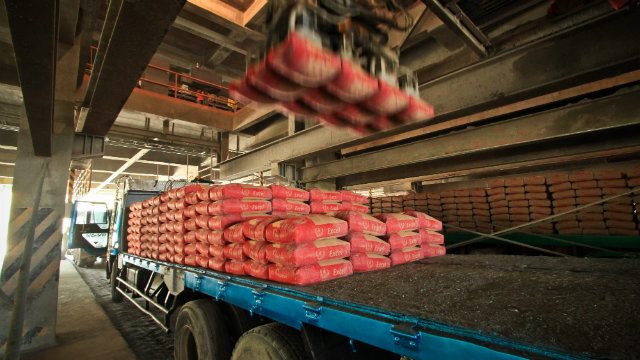SUMMARY
This is AI generated summarization, which may have errors. For context, always refer to the full article.

MANILA, Philippines – After Swiss cement group Holcim and its French counterpart Lafarge merged to create the world’s largest cement manufacturer, their local units are considering following suit.
In separate disclosures to the Philippine Stock Exchange on Monday, July 7, Holcim Philippines Inc. and Lafarge Republic Inc. said they authorized their respective corporations to explore, study, and consider the combination of all or part of their businesses.
The decision to explore merger plans is for both to benefit from synergies and opportunities.
“The transactional structure of any resulting combination will depend on the outcome of the review by the parties and their further discussions,” Holcim Philippines said Monday, July 7.
Holcim Philippines’ board authorized its president and CEO Eduardo Sahagun to undertake the study of such combination and appoint financial, legal, and technical experts as he may deem necessary.
Holcim Philippines has 4 major plants: one each in La Union, Bulacan, Davao City, and the Lugait Plant in Misamis Oriental.
The plants account for a total installed clinker production capacity per year of 6.5 million metric tons and annual cement production capacity of 7.7 million metric tons.
Meanwhile, Lafarge Republic said its 2 cement plants located in Bulacan and Norzagaray, and a plant in Iligan, Lanao Del Norte owned by its subsidiary Lafarge Iligan Inc. would be excluded from the possible merger.
“Lafarge Republic Inc. announced that its board of directors has authorized the corporation to explore, study, and consider the combination of all or part of its businesses with Holcim Philippines in order to avail itself of the resulting synergies and opportunities that are anticipated under a combination that will benefit its stakeholders,” the company said in a statement.
Lafarge Republic has 3 plants located in Bulacan, Batangas, and Rizal. Its subsidiaries are composed of Fortune Cement Corporation, Lafarge Iligan Inc., Lafarge Mindanao Inc., FR Cement Corporation, and Lloyds Richfield Industrial Corporation.
A merger of equals
On April 7, Holcim and Lafarge announced that they were merging to create the world’s biggest concrete group, amid booming construction in emerging markets, they said.
The deal, a major event in the global construction industry described in a joint statement as “a merger of equals,” involved the offer of one Holcim share for one Lafarge share.
The two groups together have a stock market value of €40 billion ($54.31 billion*), Holcim chairman Rolf Soiron told a press conference.
The companies made a commitment to sell assets to pre-empt anti-trust objections from competition authorities.
Soiron said these disposals would account for annual sales of 5 billion euros, two thirds of which would occur in Europe.
Lafarge assured that the deal would not lead directly to plant closures, with a French minister warning the government would scrutinize the merger’s impact on investment and jobs.
The new company, LafargeHolcim, “will have a unique position in 90 countries and will be evenly balanced between developing countries and countries with strong growth,” the firms said in a joint statement.
They highlighted the match of their activities since Lafarge has a strong presence in Africa and Holcim in Latin America. However, they both have big and competing interests in Europe.
Figures in the statement showed that the new giant would employ 136,000 people, have annual sales of €32 billion ($43.45 billion) and underlying profits of €6.5 billion ($8.8 billion).
The deal would generate economies of scale of €1.4 billion ($1.9 billion) over 3 years.
Founded in Switzerland in 1912, Holcim employs 71,000 people, with production sites in about 70 countries, with notched up net sales of 19.7 billion Swiss francs (€16.1 billion = $21.86 billion) in 2013.
Lafarge began as a French limestone-quarrying company in 1833, and now employs 65,000 people in 64 countries, with annual sales of €15.8 billion ($21.45 billion).
The merger is expected to be completed by mid-2015. – Rappler.com
(€1 = $0.74)
Add a comment
How does this make you feel?
There are no comments yet. Add your comment to start the conversation.